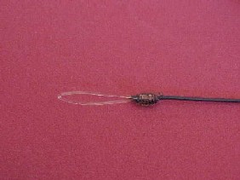Bass
{{start}}
{{end}}

{{+1}}Lake Burrendong{{-1}}
{{start}}
Built in 1967 to provide irrigation to the central-west region of NSW Lake Burrendong is massive even at low water levels and at full capacity has a surface area of 8900 hectares which is three and a half time as big as Sydney harbor.{{end}}

{{+1}}Brogo Dam{{-1}}
{{start}}
When full Brogo Reservoir, covers an area of around 95 hectares. The dam was constructed to meet local town water supply, irrigation and stock and domestic requirements.{{end}}

{{+1}}Lake Maroon{{-1}}
{{start}}
Lake Maroon is one of South East Queensland's best freshwater fly and surface fishing destinations It lays close to the base of the Great Dividing Range on Burnett Creek, a tributary of the Logan River.{{end}}

{{+1}}Cania Dam{{-1}}
{{start}}
Cania Dam has a reputation of being an all round fishing venue but in reality for me it is best suited to the warmer months when there is plenty of insect activity.{{end}}

{{+1}}Borumba Dam{{-1}}
{{start}}
Located near Imbil south of Gympie Borumba Dam is unique in that it offers both great Bass and Saratoga fly fishing.{{end}}

{{+1}}Tiemco 40mm soft shell cicada{{-1}}
{{start}}
This very popular surface lure is my choice of cicada surface lure for bass and for any species that feeds on the natural.
My colour choice is black or olive tsukutsuku.
The wings fold in on the cast so that it casts well and the pressure of water as the lure is retrieved makes the wings fold out and imparts a "walk the dog" swimming action on the lure with plenty of water movement.
My preferred retrieve is to cast the lure close to where you think bass are holding and let it sit till the impact rings on the surface dissipate. If they don't illicit a strike then just wiggle the rod tip to reactivate the rings again. If that doesn't illicit a strike slowly retrieve the lure with a few pause along the way.

|
 |
{{end}}

{{+1}}Yakamito Devil Edge 60{{-1}}
{{start}}
This a really neat small diving lure that dives down as much as 3 meters.
I particularly like it because it’s a floating lure and if you feel your line or leader touch timber and immediately pause the retrieve the lure rises quick enough it to risen above the timber by the time you restart your retrieve . If it does hook up on timber a soft approach is best and the lure will often release it the line is repeatedly jiggled or flicked to release the snagged hook from the timber.
For bass my favorite colour is P01653 Pinky. This colour has a purple hue which bass love. There is a second colour from the range that I also think will be a winner and that's a translucent barred gold. I am pretty sure that will be great for bass and bream.

|
 |
{{end}}

{{+1}}Fly lines that I use – #8 weight (estuary, bass, saratoga & perch){{-1}}
{{start}}
I have settled on #8 outfits and the following fly lines for when I target estuary species such as bream, flathead, mangrove jack and small trevally and queenfish, as my preferred outfits for bass, saratoga and various perch and as my go to outfits for when I fish to bonefish.{{end}}

{{+1}}Getting started – bass and native fish flies{{-1}}
{{start}}
- Getting started - dry trout flies
- Getting started - wet trout flies
- Getting started - salt water flies
- Getting started - the gear
Bass and native fish flies are are flies that have been designed specifically for use fresh water environments to catch bass and other native fish that spend a large part of their life cycle in brackish or fresh water.
Dry flies.
Particularly for bass and saratoga a lot of attention has been focused on dry or surface flies undoubtedly because both species much sort after because of the voracious surface feeding attacks.
Wet flies
In the case of bass and saratoga fishing with wet flies is much less popular than the visual appeal of surface fishing whereas for other species such as silver perch, yellowbelly and cod it is mostly about wet flies.
Particularly for bass and saratoga a lot of attention has been focused on dry or surface flies undoubtedly because both species much sort after because of the voracious surface feeding attacks.
{{end}}

{{+1}}Leaders – #8 weight for estuary and native species{{-1}}
{{start}}
This is the set up I use for my #8 weight fly rods when boat or bank fishing for the likes of Bass, Sarratoga, Yellowbelly, Silver Perch, Mangrove Jacks, Redfin, smaller Barra and smaller Cod.{{end}}
























